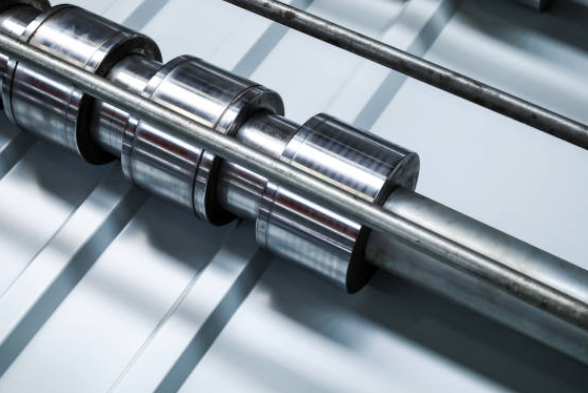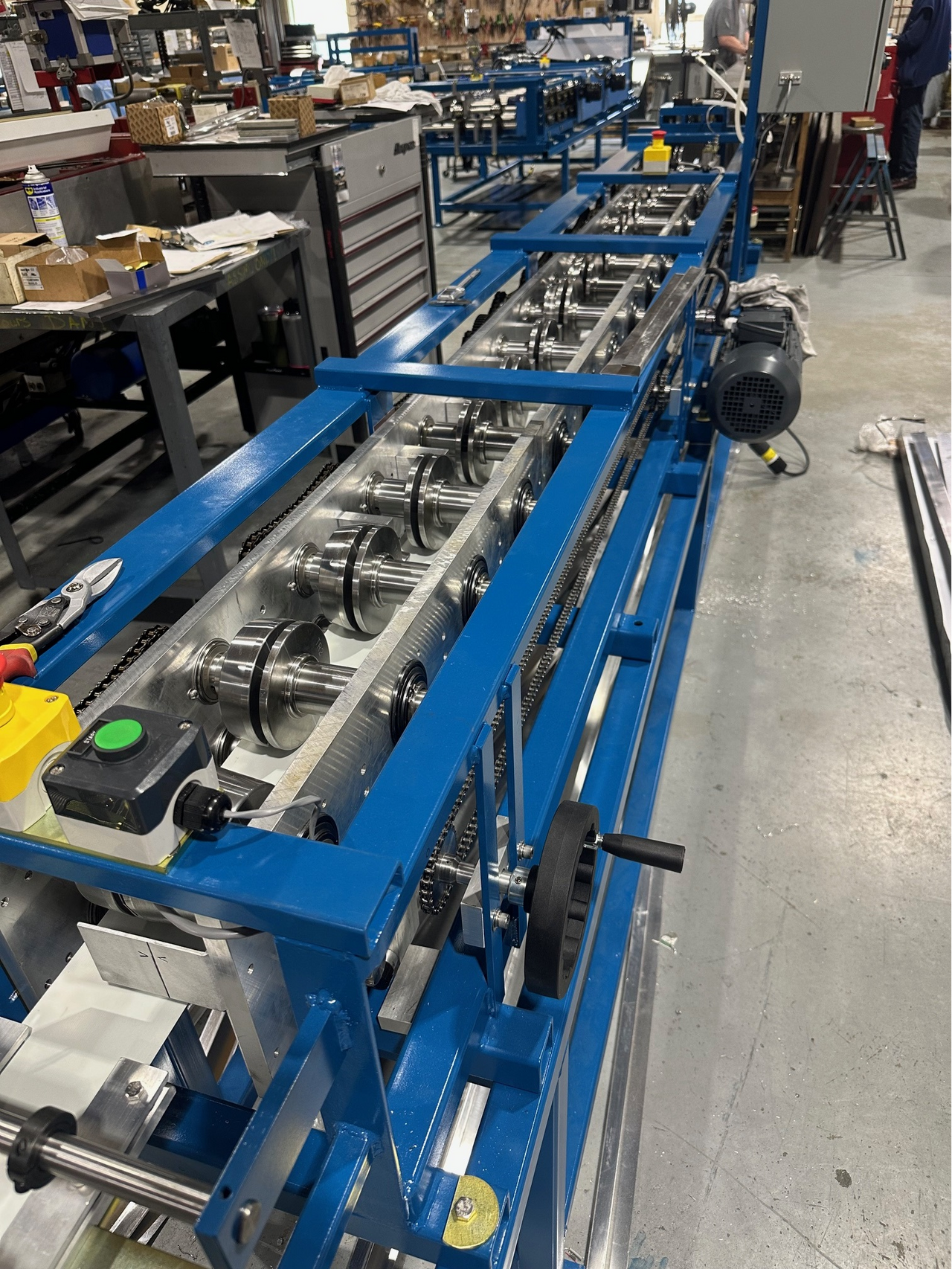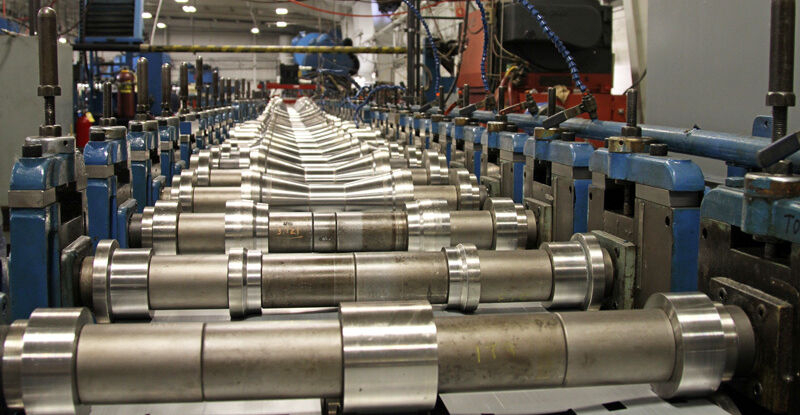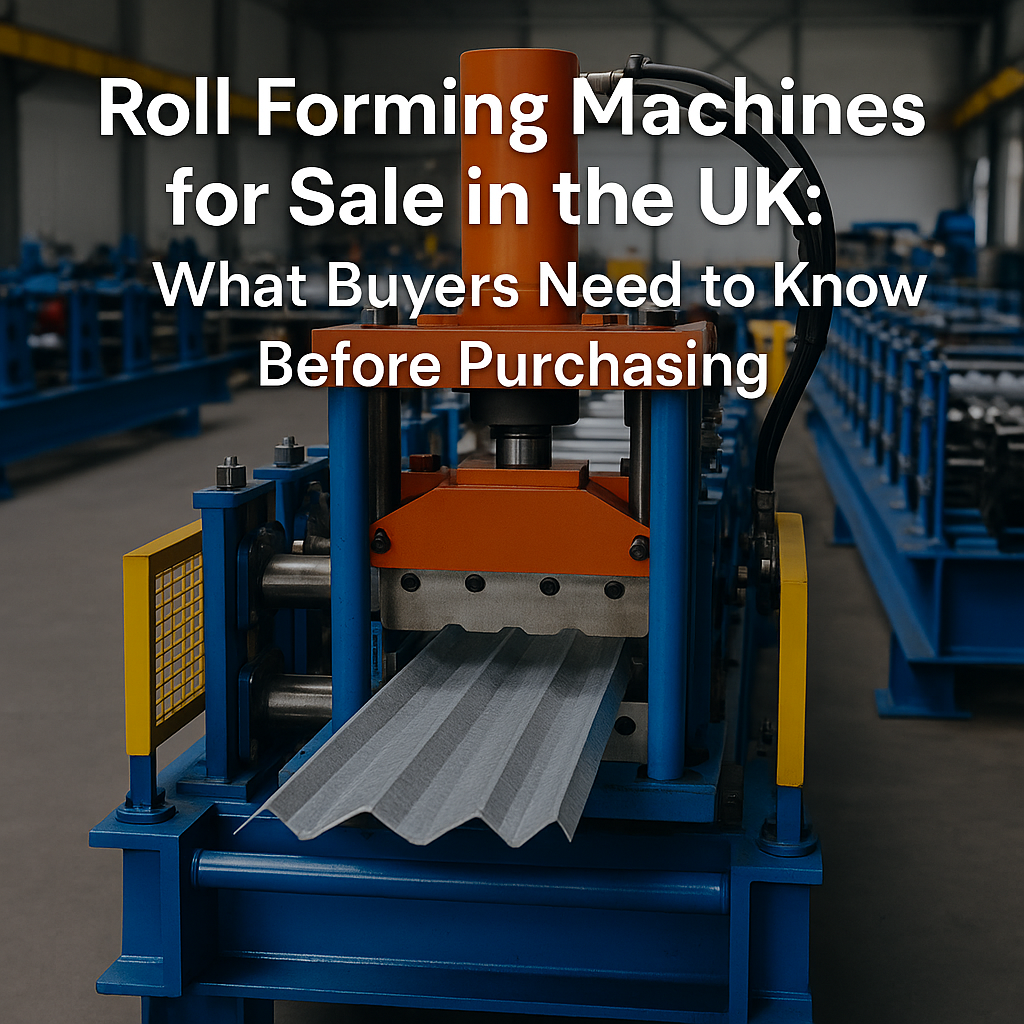Investing in new roll forming equipment is a significant step for manufacturers, contractors, and anyone involved in the construction or metalworking industry. However, ensuring that the equipment operates at its full potential begins with proper assembly. In this blog, we’ll cover the key steps and best practices for assembling your new roll forming machine, ensuring it is set up for long-term success and efficiency.
1. Pre-Assembly Preparations
Before you begin the assembly process, proper planning is essential to avoid future issues. Here are some of the critical preparation steps:
- Site Planning: The first step is to ensure that your workspace is ready. This includes planning for electrical connections, ensuring there is ample room to accommodate the equipment, and laying out a workflow that supports the machine’s operation. Roll forming machines often require significant space, especially if they include auxiliary equipment like uncoilers and runout tables.
- Tools and Resources: Having the right tools on hand is crucial for a smooth assembly process. Some essential tools might include forklifts for unloading large components, hydraulic tools for setting up heavy parts, alignment instruments to ensure accuracy, and electrical testing devices.
- Safety Checks: Safety should be a priority throughout the entire assembly process. This includes verifying that all tools are in working order, ensuring that all team members are trained in proper safety procedures, and wearing the appropriate protective gear such as hard hats, safety glasses, and gloves. Inspect the workspace for potential hazards before beginning.
2. Unpacking and Inspection
Once the site is prepared, the next step is unpacking and inspecting the new equipment:
- Inspecting Components: As you unpack each component, carefully inspect for any signs of damage during shipping. Even small dents or scratches can affect the machine’s precision. Check that all parts and hardware, such as rollers, shafts, and fasteners, are included and match the specifications provided in the machine’s manual.
- Laying Out the Parts: Organizing the parts in the order of assembly can save you time and help ensure you don’t miss any steps. Lay out the components in a logical sequence, leaving enough space to work comfortably.
3. Main Structure Assembly
Now it’s time to begin assembling the main structure of the roll forming machine. Precision and alignment are key in this step:
- Setting Up the Base: Positioning the base structure on a level surface is the first task. Use leveling tools to confirm that the base is perfectly horizontal. If the base isn’t level, the machine may produce inconsistent results, causing alignment problems throughout the production process.
- Installing Rollers and Shafts: One of the most critical steps is installing the rollers and shafts that form the core of the roll forming process. These parts shape the metal as it passes through the machine, so proper alignment is essential. Follow the manufacturer’s guidelines closely when installing these components, ensuring that they are secure and properly calibrated.
4. Electrical and Hydraulic System Setup
Roll forming machines often rely on complex electrical and hydraulic systems. Ensuring that these systems are correctly set up is essential for smooth operation:
- Connecting the Power Supply: Connect the electrical components following all safety protocols. Modern roll forming machines often feature automated systems that require precise wiring. It’s recommended to have a qualified electrician handle the connections to avoid errors or safety risks. Check that all connections are secure and that the control panel is functioning correctly.
- Hydraulic Systems: Many roll forming machines use hydraulics to power cutting, punching, and other mechanical actions. Proper setup of hydraulic pumps, hoses, and cylinders is crucial for maintaining system pressure and operational efficiency. Be sure to follow the manufacturer’s hydraulic setup instructions carefully.
5. Fine-Tuning and Calibration
Once the primary components are assembled, the next step is fine-tuning and calibrating the machine to ensure that it operates with precision:
- Adjusting Rollers: Adjust the rollers to ensure they are correctly aligned. Even a minor misalignment can cause the metal to warp or deform as it passes through the machine. Use the alignment instruments to verify that the rollers are level and spaced properly for the profile you’ll be producing.
- Running Test Sheets: Before full production, run a few test metal sheets through the machine. This will allow you to check for alignment, ensure consistent output, and identify any final adjustments that need to be made. Check the shape, edges, and thickness of the formed sheets to ensure they meet your specifications.
6. Post-Assembly Testing
After the assembly and initial adjustments, it’s time to perform a more comprehensive test of the system:
- Performance Testing: Conduct full test runs to see how the machine operates under regular production conditions. Monitor for any signs of mechanical strain, abnormal noises, or performance inconsistencies. It’s essential to test the machine under real operating conditions to catch any problems early.
- Troubleshooting: If you encounter any issues, such as material jamming, inconsistent cuts, or hydraulic system problems, it’s vital to troubleshoot immediately. Refer to the manufacturer’s manual for troubleshooting guides, and consult with your assembly team or technicians as needed.
7. Operator Training and Maintenance Tips
With the machine assembled and tested, the final step is ensuring proper operation and maintenance:
- Training Operators: Training your operators is crucial for long-term success. Ensure that they understand how to safely operate the machine, adjust settings, and perform routine maintenance tasks. Proper training helps prevent accidents and prolongs the life of the equipment.
- Maintenance Guidelines: To keep your roll forming machine running smoothly, establish a regular maintenance schedule. This should include tasks like lubricating the rollers, inspecting the hydraulic system for leaks, and cleaning the machine regularly to prevent material buildup. Routine checks on the electrical system and control panels will also help avoid downtime due to unexpected malfunctions.
Conclusion
Assembling new roll forming equipment can be a complex process, but following the right steps and best practices ensures a successful setup. From pre-assembly site planning to operator training and maintenance, each stage plays a critical role in ensuring that your roll forming machine operates efficiently and produces high-quality products for years to come. Whether you’re adding to an existing production line or setting up a new facility, the proper assembly of your roll forming machine is key to maximizing your investment and enhancing productivity.
By paying attention to detail and ensuring all systems are correctly installed and calibrated, your business will be well-positioned to meet production demands and maintain long-term operational success.




